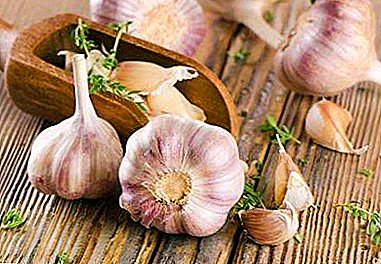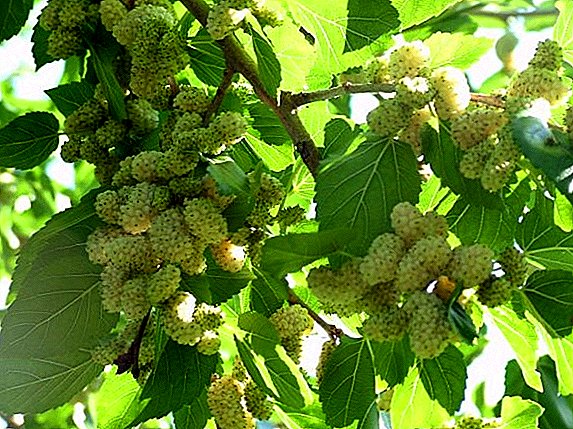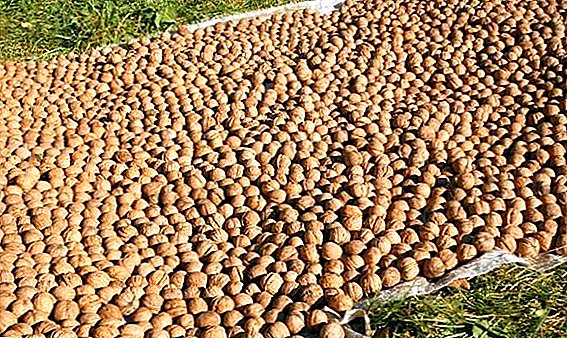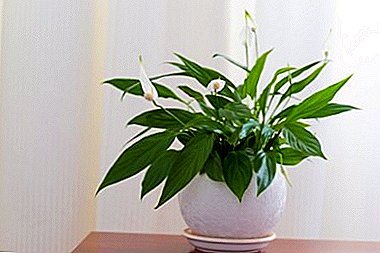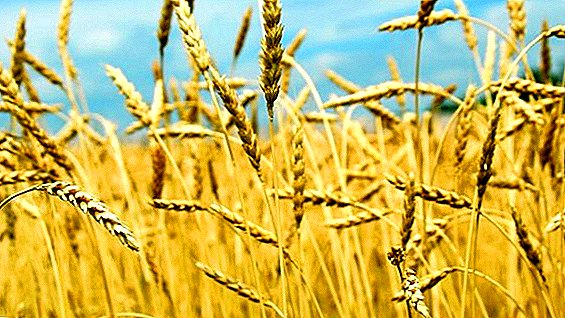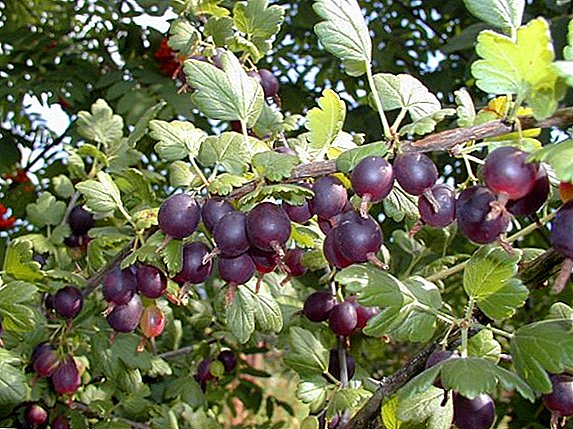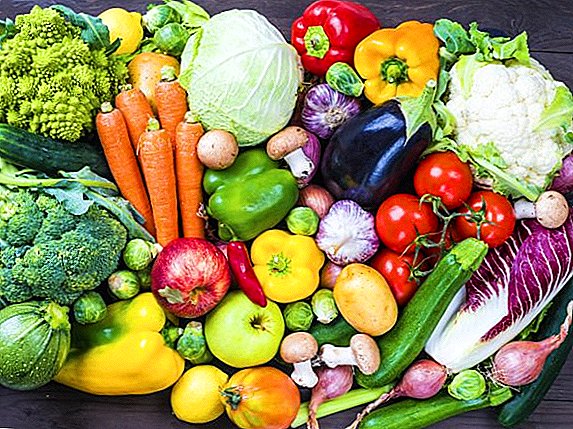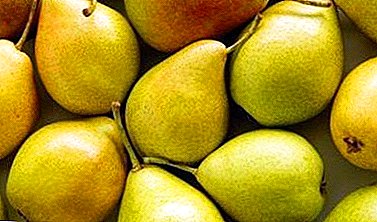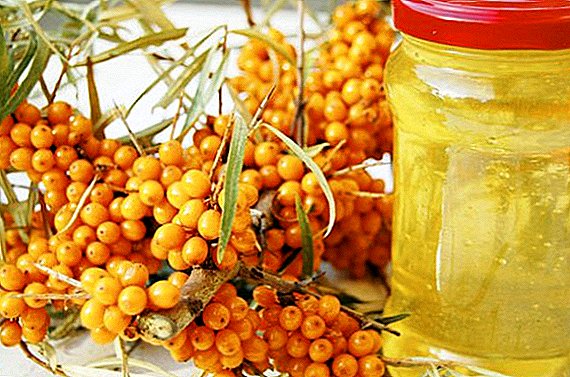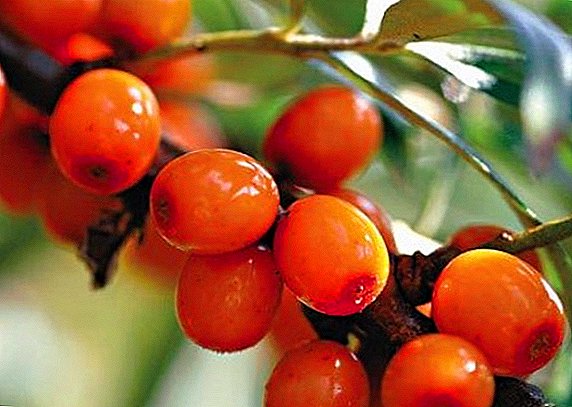 Sea buckthorn - The most famous plant of the genus Buckthorn, which includes only two species. The second species, the buckthorn, is growing only in some regions of East Asia. But krushenovidnaya well known from Western Europe to Pakistan.
Sea buckthorn - The most famous plant of the genus Buckthorn, which includes only two species. The second species, the buckthorn, is growing only in some regions of East Asia. But krushenovidnaya well known from Western Europe to Pakistan.
Fame brought her numerous healing properties.
Description
About the decorative and healing properties of sea buckthorn was known in ancient Greece, as a confirmation, there are quite a lot of references to it in the ancient literature. This small tree or dioecious shrub belongs to the Lokhovye family and grows in the temperate climate of Europe and Asia.
We recommend that you familiarize yourself with the peculiarities of cultivating sea buckthorn of other varieties and foreign sea buckthorn - Shepherdia.
Sea buckthorn belongs to the ornamental plants, as its appearance will decorate any garden area and park. The height of the tree is 3-5 m, its trunk is covered with gray bark. On thin, smooth sprigs with spines is a linear-lanceolate foliage gray-green.  Shrub blooms in late April - early May, before the leaves bloom. By the end of August the harvest is ripening on the tree. Fruits of sea buckthorn - round drupes, which in common people are often called berries. It is better to collect drugs after the first frosts, as they become tastier, the bitterness goes away and a pleasant sour taste remains.
Shrub blooms in late April - early May, before the leaves bloom. By the end of August the harvest is ripening on the tree. Fruits of sea buckthorn - round drupes, which in common people are often called berries. It is better to collect drugs after the first frosts, as they become tastier, the bitterness goes away and a pleasant sour taste remains.
Planted sea buckthorn is best in sunny areas, with loose soil.
Important! In order for the sea buckthorn to bear fruit, it is necessary to plant trees on the site 2 - male and female, then with the help of the wind they will pollinate and bring in the harvest.
Composition and nutritional value
Fruits and leaves of sea buckthorn - a real fount of useful substances. They contain vitamins A, B, C, PP, H and E.
Also in the plant are:
- essential oils;
- tannins;
- folic acid;
- flavonoids;
- carotene;
- Sahara.
 This product is rich in potassium, calcium, iron, phosphorus, sodium and magnesium. The combination of mineral salts and acids, which has the scientific name "electrolytes", is also present in this product and is very useful for the body.
This product is rich in potassium, calcium, iron, phosphorus, sodium and magnesium. The combination of mineral salts and acids, which has the scientific name "electrolytes", is also present in this product and is very useful for the body.100 g of fruits contain 82 kcal. This product has the following indicators BJU (per 100 g):
- 1.2 g of proteins;
- 5.4 g fat;
- 5.7 g of carbohydrates.
Did you know? If you eat only 100 grams of sea buckthorn per day, you will receive a daily rate of essential vitamins and minerals.
Beneficial features
The rich and diverse chemical composition of this plant makes it very useful for humans. Sea buckthorn is shown for:
- treating gout and rheumatism;
- enhance immunity, due to the high concentration of vitamins;
- treatment of colds and viral diseases;
- improve digestion and activate the production of digestive enzymes;
- removal of inflammatory processes, their internal and external manifestations;
- treatment of diseases of the oral cavity, gums and teeth;
- treatment and prevention of gynecological diseases;
- hemorrhoids treatment;
- cancer prevention.
 In addition, she:
In addition, she:- helps from burns;
- is a diaphoretic and diuretic;
- promotes healing and resorption of stitches, scars and scars;
- relieves pain;
- is an important component of the diet and health food.
Medicinal properties
It is noteworthy that practically all parts of the plant, the leaves, the bark, and the drupes, are of benefit to the human body, but the range of their application is somewhat different.
Fruit
This is the main medicinal raw material of this plant. Sea buckthorn fruits:
- used to treat diseases of the gastrointestinal tract, both in classical and traditional medicine;
- shown with vitamin deficiency, reduced immunity, during viral and colds;
- due to the high content of vitamins, significantly facilitate recovery after prolonged illness and operations;
- promote blood formation;
- improve cardiovascular function.

For the prevention and treatment of diseases of the digestive system are also used: dogwood, lettuce, calendula, hyssop, peppermint, spinach.
Sea buckthorn juice is used for external use, for dermatitis, irritation, burns and ulcers of the skin.
Tincture of fruits and leaves to strengthen the body: 20 g of dried sea buckthorn fruits pour 200 ml of warm water and leave to infuse for 6 hours. After the indicated time the infusion is filtered and taken 50 ml 3 times a day.
Butter
Oil from the fruits of this plant is highly valued in folk and classical medicine, as well as cosmetology. This product is incredibly useful because:
- has anti-inflammatory properties;
- acts as an anesthetic;
- helps with skin diseases of different etymologies, including bedsores, ulcers, burns and frostbite;
- candles with this oil are considered safe and effective for hemorrhoids and anal fissures;
- effectively in the treatment of gastric and duodenal ulcers, as well as the treatment of esophageal oncology.
Sea buckthorn oil is used as follows:
- When a stomach ulcer or duodenal ulcer in 10-15 ml before meals.
- For the treatment of gynecological diseases, cotton swabs are moistened in it and injected vaginally.
- On burns, wounds, ulcers, and other skin lesions impose gauze compress soaked in sea buckthorn oil.

Bark
Alcohol extract is made from the bark of this tree, which is indicated for cancer patients during chemotherapy. Folk healers also emphasize the effectiveness of decoction of sea buckthorn bark with diarrhea.
Did you know? Sea buckthorn fruits contain 1000 times more happiness hormone (serotonin) than bananas and chocolate.
Broth from the bark of sea buckthorn from diarrhea: 1 tbsp. 200 ml of boiling water are poured over a spoonful of bark and simmered for 5 minutes. Ready broth is cooled and filtered. Take as needed 3-4 times a day.
Leaves
Decoction and tincture of sea buckthorn foliage is used for:
- treatment of rheumatism and gout;
- strengthen the immune system;
- improve liver function;
- normalization of vision;
- douches from gynecological diseases.
Compresses for local anesthesia from sea buckthorn leaves: dried or fresh leaves are wrapped in a bandage or gauze, then dipped in boiling water for 2-3 minutes. When the lotion cools down to a tolerable temperature, it is applied to the sore spot. 
Harm and contraindications
Although the fruits, foliage and bark of this plant are extremely beneficial, there are several cases where they should be avoided, namely:
- individual intolerance and allergic reactions;
- with pancreatitis and cholecystitis;
- during the acute course of hepatitis and peptic ulcer diseases.
Other berries, such as raspberry, cloudberry, sunberry, prince, blackberry, mountain ash, blueberry, cherry, strawberry, lingonberry, cranberry and blueberry, also have useful properties.
Stocking
In order for this medicinal plant to bring maximum benefit to the body, it must be properly prepared. The foliage is harvested either before the beginning of flowering, or at the end of August, along with the harvest.
And the bark - at the very beginning of spring. Collecting stone farms can be started in August or postponed until frost, it all depends on how you plan to prepare them.
Important! Store dried billet, leaves, fruits and bark preferably in cardboard boxes or bags of natural material. The room where they are stored should be cool and dry.
Methods of harvesting sea buckthorn:
- For drying, whole fruits are needed, that is, harvested immediately after ripening. They are washed and dried, and then dried in an oven at a temperature not higher than 50 ° C, or dried in fresh air, but this requires approximately 60 sunny days in a row, and this possibility is not always there.
- You can also freeze the sea buckthorn on the twigs or pre-harvesting the fruit and placing it in a container. This method allows you to save fortified stone fruit until next season.
- Another way to store sea buckthorn is to put it in jars and pour it with cold boiled water, then close the lid tightly and put it in the refrigerator or cellar.
- The leaves are dried in a well-ventilated area. The collected raw materials must be spread out on thick paper and left away from sunlight. Periodically, the leaves need to be mixed and turned over so that they are not moldy and evenly dried out.
- The bark is also dried in protected from light areas with good air circulation.
Special attention deserves sea buckthorn oil - it is incredibly useful, and cook it at home is not difficult. For this you need to take ripe drupes, rinse them and squeeze the juice. Then the remaining cake is dried and crushed in a mortar or coffee grinder.  Sea buckthorn powder is poured with vegetable oil (olive or sunflower), heated to 60 ° C in a 1: 2 ratio. Mixture allowed to brew for 24 hours and filtered. After that, the oil is ready for use for medicinal purposes. The remaining oil can be poured over with oil and used for cosmetic or culinary purposes.
Sea buckthorn powder is poured with vegetable oil (olive or sunflower), heated to 60 ° C in a 1: 2 ratio. Mixture allowed to brew for 24 hours and filtered. After that, the oil is ready for use for medicinal purposes. The remaining oil can be poured over with oil and used for cosmetic or culinary purposes.
It will be useful for you to learn how to quickly collect sea buckthorn, as well as the best recipes for harvesting sea buckthorn for the winter.
Now you know how the fruits, foliage and bark of sea buckthorn are used for medicinal purposes. This plant can help in solving a variety of health problems, as well as strengthen the immune system and help the body recover from long-term illnesses and operations.
And folk recipes for dealing with various ailments, which include this plant, allow you to make medicine on your own, at home.


